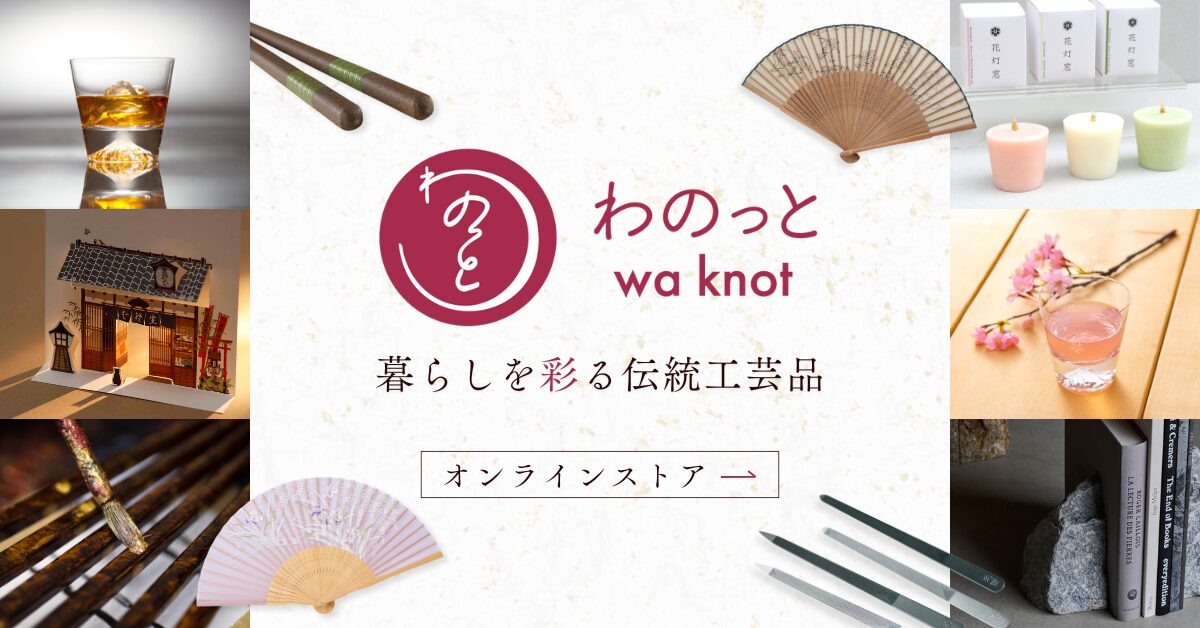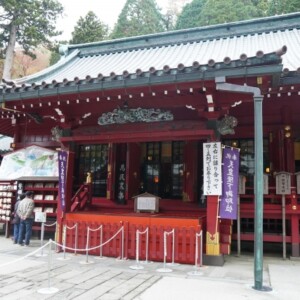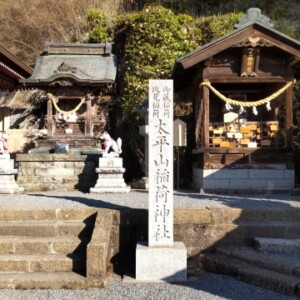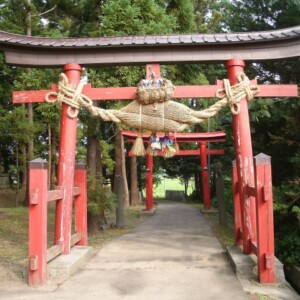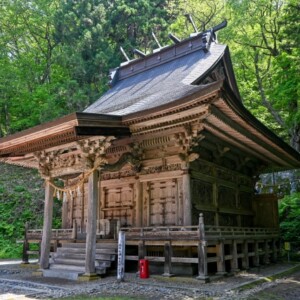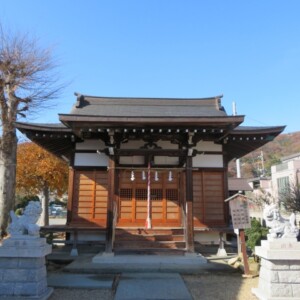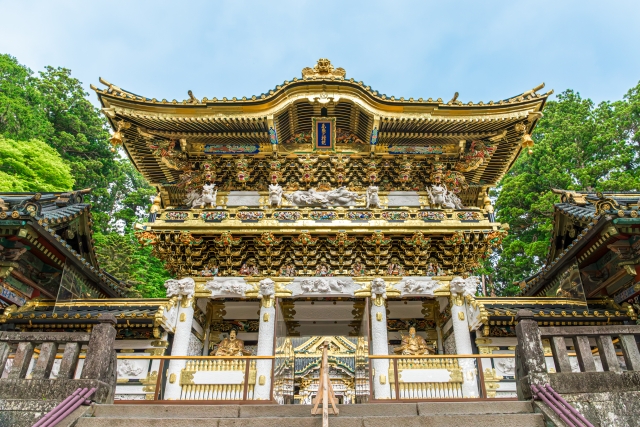
Nikko Toshogu Shrine|Complete guide to the history, highlights, and worship information of this historic shrine
Nikko Toshogu Shrine, enshrining Ieyasu Tokugawa, is one of the most famous shrines in Japan and attracts many worshippers from around the world. The shrine pavilions, with their gorgeous decorations and exquisite carvings, are works of art that showcase the best of Edo period craftsmanship. From the well-known masterpieces such as the Yomeimon Gate, the Sleeping Cat, and the Three Monkeys to its charm as a power spot, we will introduce the various highlights of this sacred site.
Outline and Basic Information on Nikko Toshogu Shrine
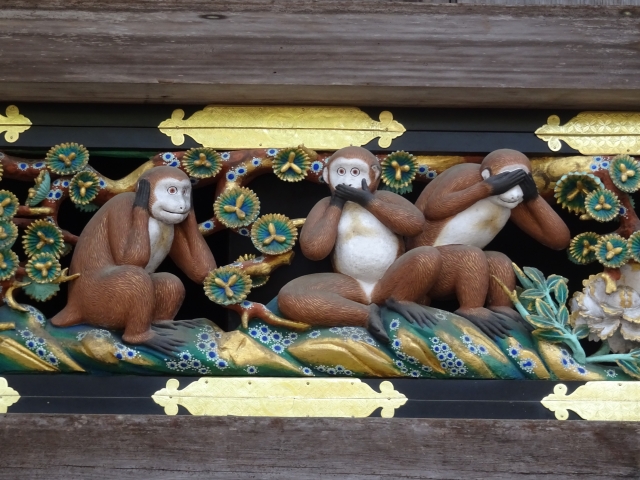
Nikko Toshogu Shrine is located in Nikko City, Tochigi Prefecture. The main deity is Toshodai Gongen, the deified version of Tokugawa Ieyasu, the first shogun of the Edo Shogunate, and is the head shrine of all Toshogu shrines in Japan. The official name of the shrine is “Toshogu,” which does not include the name of the place, but it is also called “Nikko Toshogu” to distinguish it from other Toshogu shrines.
The 55 buildings on the grounds, including 8 National Treasures and 34 Important Cultural Properties, are a sight to behold in all their splendor and beauty, and were registered as a component of the UNESCO World Cultural Heritage Site “Shrines and Temples of Nikko” in 1999. It is highly regarded both domestically and internationally as a religious architecture that represents the best of technology and art of the early Edo period.
History and Origin
Nikko Toshogu Shrine was built in 1617 by the second shogun, Tokugawa Hidetada, as a shrine dedicated to Tokugawa Ieyasu. The original shrine pavilions were simple, but between 1634 and 1636, the third shogun, Tokugawa Iemitsu, reconstructed the shrine, giving it the luxurious appearance seen today.
This large-scale renovation was known as the “Kan’ei no Dai Zokei” (the Great Rebuilding of Kan’ei), and it brought together the finest master craftsmen and painters from all over Japan. The building is decorated with lacquer and exquisite colors, and the pillars are adorned with numerous carvings by master craftsmen from all over Japan. The Iemitsu Shrine, built as an expression of his respect for his grandfather, Ieyasu, was completed as a group of buildings symbolizing the dignity and prosperity of the Edo Shogunate.
Deities and Benefits
The main deity of Nikko Toshogu Shrine is Tosateru Daigongen, the deified version of Tokugawa Ieyasu. Ieyasu, the great military commander who ended the Warring States period and laid the foundation for the peaceful Edo period that lasted for more than 260 years, is believed to be blessed with luck in victory, success in life, and good fortune.
Nantai, which is said to be a sacred mountain in the Nikko mountain range, and feminine energy from Nyomine, which is said to be soft and gentle. The entire temple grounds are known as a powerful power spot, especially visited by worshippers who seek blessings for luck in work, victory, and upward mobility.
Nikko Toshogu Shrine Highlights

The attraction of Nikko Toshogu lies in its overwhelming decorative beauty and high level of architectural skill. The shrine pavilions, which are the culmination of the skills of craftsmen in the early Edo period, boast a beauty that overwhelms the viewer. The colorful decorations and exquisite carvings in particular are a precious cultural heritage that testify to the highest level of technology of the time.
Architectural and Structural Attractions
The most famous of Nikko Toshogu’s architectural complexes is the Yomeimon Gate, designated as a National Treasure. Yomeimon is known as the “Nichigure Gate” because the entire building is covered with a frightening number of extremely colored carvings that one could look at all day and not get tired of it. The gate is an imposing structure, with a girigakko (frontage) of approximately 7 meters, a beam span (depth) of approximately 4 meters, and a height to the ridge of approximately 11 meters.
The main hall is the central building of the shrine architecture dedicated to Ieyasu, and is a representative example of the Gongen-zukuri style, in which the hall of worship, the Ishi-no-Ma (stone room), and the main hall are all combined. The interior, decorated with exquisite colors, is a beautiful reproduction of the Pure Land of Ultimate Bliss in this world.
The five-story pagoda is a magnificent structure measuring approximately 36 meters in height, each level of which is decorated with carvings of the twelve signs of the Chinese zodiac. The Shinkyusha, a building used to house the sacred horses, is where the famous carvings of the three monkeys can be found.
Beauty of Sculptures and Decorations
The shrine pavilions of Nikko Toshogu are also decorated with a frightening number of carvings. In addition to the Yomeimon gate, there are numerous carvings on the front gate, corridors, Karamon gate, worship hall, and main hall. The total number of sculptures is 5173, of which 508 are located in the Yangmyong Gate. These sculptures are not mere decorations, but each one has a deep meaning.
The most famous, the three “see no evil, speak no evil, hear no evil” monkeys, are part of an eight-sided sculpture of monkeys representing the life of a human being, symbolizing the innocence of childhood. These monkey sculptures, placed on the long posts of the Shinto stables, are popularly known as didactic pieces that tell the story of the process of human development.
The Sleeping Cat is a national treasure sculpture said to have been created by Jingoro Hidari, and is placed in the east corridor, the entrance to the inner shrine. It is said that the Sleeping Cat is actually pretending to be sleeping to protect Ieyasu, since it is stepping on the ground and is in a posture ready to pounce at any moment, but another teaching is that it represents “peace so great that even cats sleep” so that they can sleep even if sparrows are dancing in the back.
Cultural Properties and Important Collections
Nikko Toshogu Shrine preserves many valuable cultural assets, including 8 National Treasures and 34 Important Cultural Properties. All major buildings, including the Gohonsha (consisting of the main shrine, Ishinoma, and the hall of worship), the Yomeimon Gate, and the Karamon Gate, are designated as National Treasures.
At the Toshogu Treasure Museum, visitors can view swords, furnishings, paintings, and other valuable items that have been passed down through the Tokugawa family. In particular, the favorite possessions of Ieyasu and items related to successive shoguns are important documents that tell the story of the culture and history of the Edo period.
The “Naruryu” dragon painted on the ceiling of Honjido is another highlight of the museum. The acoustic effect of clapping one’s hands under the dragon painting, which reverberates on the ceiling and sounds like a cry, demonstrates the high level of construction technology of the time.
Guide to Worship and Visiting
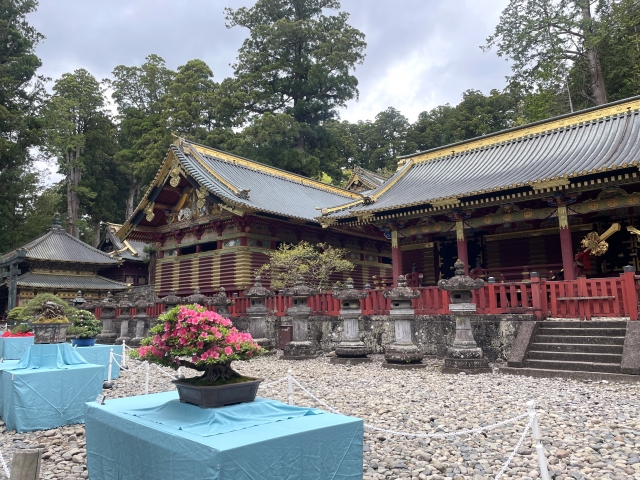
Worship at Nikko Toshogu Shrine is a precious experience in a sacred space. As a historic shrine dedicated to Tokugawa Ieyasu, many visitors come to pray for peace of mind and good fortune. When visiting the shrine, please be mindful of proper manners and etiquette, and make the most of your time at this historic and sacred place.
Worship Etiquette and Manners
When visiting Nikko Toshogu Shrine, visitors enter through the Omote-mon Gate and proceed to the Yomeimon Gate and the hall of worship. Before entering the shrine precincts, begin by purifying your hands and mouth at the Tezumisha. Wash your left hand first, then your right, and rinse your mouth to purify your mind and body before entering the shrine.
When praying at the shrine, follow the “Ni-hai (two claps, one hand, one bow)” ritual. After depositing money in the offering box, bow deeply twice, clap your hands twice in front of your chest, and bow deeply at the end. When you visit the shrine, offer your heartfelt thanks, and if you have a wish, make it specific and convey it from your heart.
Photography is allowed in some areas of the temple grounds and prohibited in others. It is important to refrain from taking pictures inside the building or when the priests are performing rituals, and to remember to be considerate of other visitors. Also, avoid loud conversations and running around, and try to maintain a quiet atmosphere.
Annual and Seasonal Events
Nikko Toshogu Shrine holds the Spring Grand Festival in May and the Autumn Grand Festival in October, which include the Yabusame (horseback archery) ritual and the Hyakumonotori Senjin Samurai Procession. These festivals are traditional events that have been held since the Edo period and attract many visitors.
The Spring Grand Festival is held on May 17 and 18 every year, and is the most important festival held on the anniversary of Ieyasu Tokugawa’s death. The parade of warriors in colorful costumes parading through the shrine grounds is a spectacular sight that takes visitors back in time to the Edo period. During the yabusame (horseback archery) ritual, the participants display their heroic skills in shooting targets from horseback while galloping at full gallop.
The Autumn Grand Festival is held on October 16 and 17, with the same spectacular procession and rituals as the Spring Festival. This festival is especially popular among photographers, as it is held during the beautiful fall foliage season.
Various other festivals are held throughout the year, including the New Year’s Day Festival, the Setsubun Festival, and the Regular New Year’s Moon Festival, each with its own unique rituals to be observed.
Red Seal and Good Luck Charm Information
Several types of red seals are available at Nikko Toshogu Shrine. The basic red seal for Toshogu is available at the shrine office on the right after entering the Yomeimon Gate. In addition, another type of red seal is available at the Okumiya Shrine Office, located at the top of the stone steps leading up to the Okumiya Shrine, and red seals are also available at the Yakushido Hall.
Red seals are available during the hours of visitation, and generally cost 300 yen per seal. If you do not have a red seal book, Toshogu’s original red seal book is also available. Many visitors cherish red seals as a memorial to their visit to the shrine and as a source of emotional support.
Among the good luck charms, the lucky charms for victory and success in life associated with Ieyasu are particularly popular. There are also amulets for various wishes, such as academic achievement, traffic safety, match-making, and safe delivery. Amulets with motifs of a sleeping cat and three monkeys are appreciated as special gifts unique to Nikko Toshogu.
There are several awarding offices within the shrine grounds, each offering different types of good luck charms and lucky charms. Please stop by when you visit the shrine and find an amulet that resonates with you.
Access and Usage Information
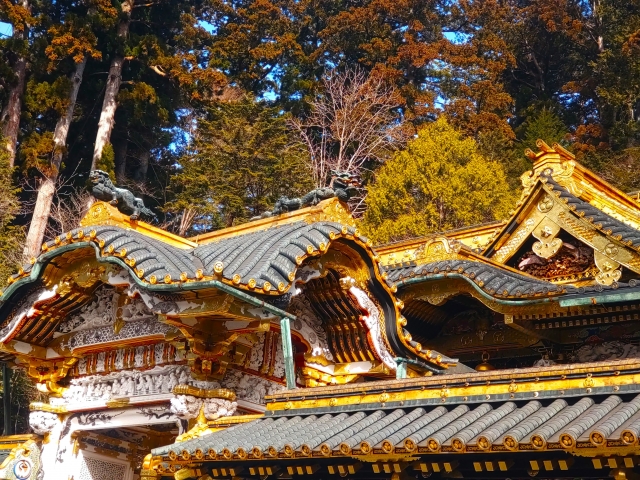
Nikko Toshogu Shrine is easily accessible from central Tokyo and is a popular day-trip destination for many visitors. Because it is relatively conveniently accessible by both public transportation and automobile, many visitors come to Nikko Toshogu regardless of the season.
Transportation Access
To access the shrine by train, take either the JR Nikko Line or the Tobu Nikko Line; from either JR Nikko Station or Tobu Nikko Station, take the Tobu Nikko Bus bound for “Chuzenji Onsen” or “Yumoto Onsen” and get off at “Jimbashi” (8-minute walk), “Omotesando” (2-minute walk) or “Nishisando” (9-minute walk).
From the Tokyo area, it takes about 2 hours from Asakusa to Nikko Station on the Tobu Skytree Line (Isesaki Line) by express train, and about 2 hours and 15 minutes from Shinjuku to Nikko Station via the JR Tohoku Main Line and Nikko Line. Both routes have a large number of trains and are convenient for sightseeing.
Access by car is approximately 2 km from the Nikko IC of the Nikko Utsunomiya Road. It takes about 30 minutes from the Utsunomiya IC of the Tohoku Expressway via Nikko Utsunomiya Road, and about 1 hour and 30 minutes from the Numata IC of the Kanetsu Expressway.
Many bus tours are available, and one-day bus tours are frequently planned from the Tokyo, Saitama, and Kanagawa areas. Bus tours are also recommended for those who are anxious about driving or who wish to sightsee more efficiently.
Hours of Admission, Fees, and Parking Information
The temple is open from 9:00 a.m. to 5:00 p.m. from April 1 to October 31, and from 9:00 a.m. to 4:00 p.m. from November 1 to March 31. During each period, the reception desk closes 30 minutes before the gate closes, so it is recommended that you allow plenty of time for your visit.
Admission to Nikko Toshogu Shrine is 1,300 yen for adults and 450 yen for elementary and junior high school students for a single ticket, and 2,100 yen for adults and 770 yen for elementary and junior high school students for a set price (Toshogu Shrine ticket + Treasure Museum admission ticket). Group discounts are available for groups of 35 or more people.
Those with a disability certificate can receive a discount by presenting their certificate at the ticket counter. In addition, consideration is also given to educational tours, as teachers accompanying elementary and junior high school students are charged the same price as students.
Parking is available at the Toshogu Grand Parking Lot, located in front of the Toshogu Art Museum, and costs 600 yen per day and has a capacity of 200 vehicles (standard cars). Since crowding is expected during the tourist season, we recommend that you consider arriving early or using public transportation.
Audio guides in Japanese (for adults/children), English, and Chinese are available for rent on the grounds. The rental fee is 500 yen per day, and the rental location is in front of the main gate. The guide includes detailed explanations of the history of Toshogu and its buildings, as well as a collection of quotes by Lord Ieyasu, which will help you better understand the charms of Toshogu.
<Address> 2301 Yamauchi, Nikko-shi, Tochigi 321-1431
Reference site
Nikko Toshogu Shrine official website: https://www.toshogu.jp/
Nikko City Tourism Website: Nikko Tabinavi: https://www.nikko-kankou.org/spot/2


